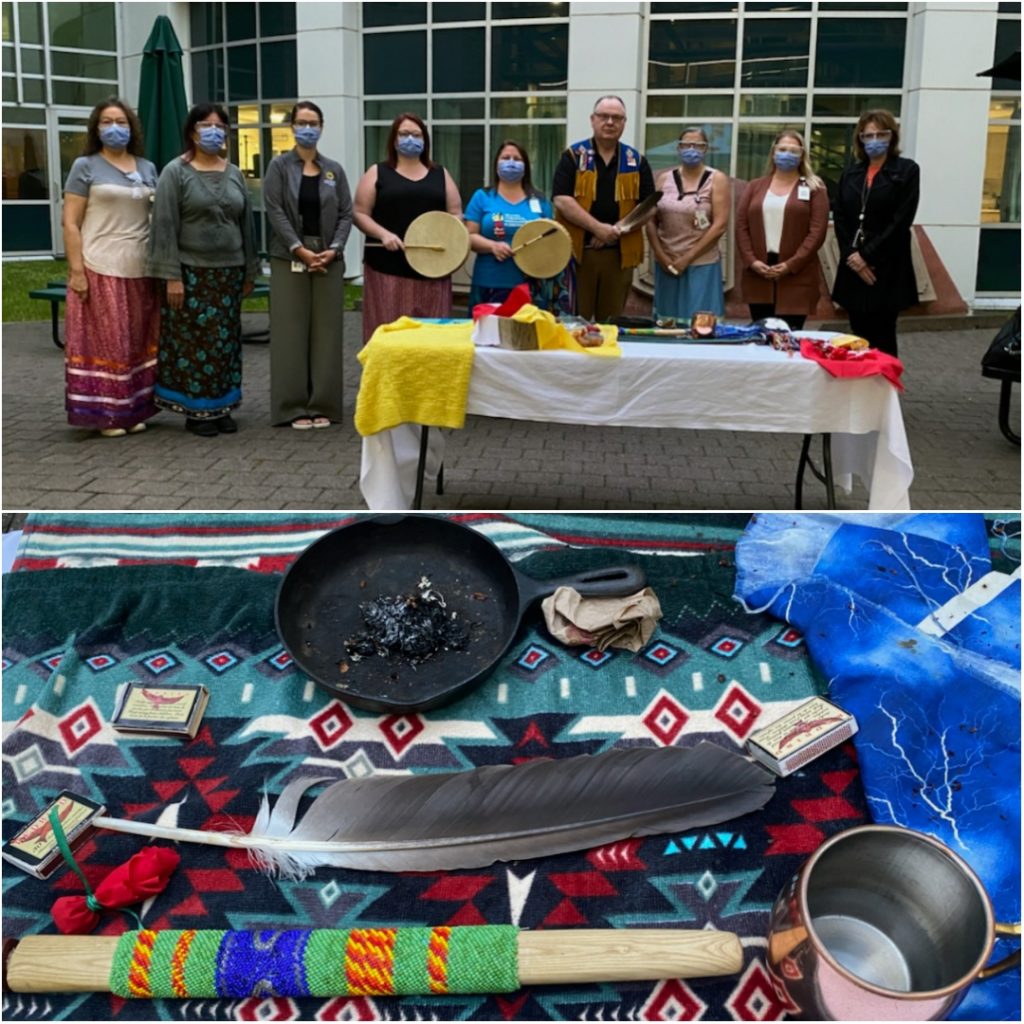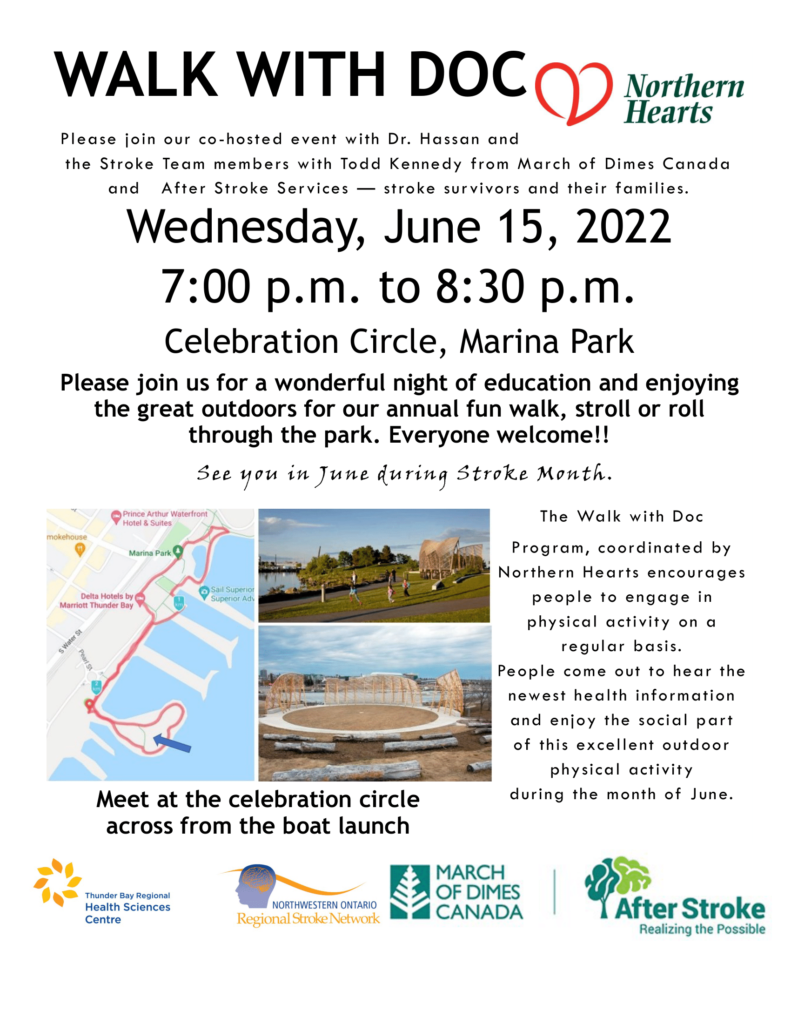Clinical Highlights from the U of A’s Stroke Rehabilitation Certificate Course (June 23)



National Indigenous Peoples Day (June 21) is a day for all Canadians to recognize and celebrate the unique heritage, diverse cultures and outstanding contributions of First Nations, Inuit and Metis peoples. Although these groups share many similarities, they each have their own distinct heritage, language, cultural practices and spiritual beliefs. For generations, many Indigenous peoples and communities have celebrated their culture and heritage on or near this day due to the significance of the summer solstice as the longest day of the year.
On the morning of June 21, we invited staff to join a Sunrise Ceremony in the Hospital’s Cafeteria courtyard to celebrate the start of National Indigenous Peoples Day. At noon we shared bannock with staff for a midday snack which included a brief teaching about the sixth moon (also known as the strawberry moon). We hope others in the community had the opportunity to participate in similar festivities today to acknowledge the significance of this important day.



Shared on behalf of Rhonda Crocker Ellacott, President and CEO, TBRHSC, and CEO, TBRHRI

On behalf of the Hospital, Health Research Institute and Health Sciences Foundation, I am excited to invite all staff, professional staff, learners and volunteers to a Staff Appreciation BBQ on June 15.
The BBQ will also coincide with the kick-off of our Strategic Plan 2026. Join us from 12:00 pm to 3:00 pm in the courtyard, outside of the Cafeteria.. The BBQ will include burgers (including a vegetarian option), salad, ice cream and some give-aways as a thank you for all that you do. All staff, professional staff, learners and volunteers are invited to attend. Snack boxes will be offered for staff on the evening shift of June 15.
The Kindness Carts will also be roaming throughout the Hospital during the week of June 13 to all departments providing snacks and small tokens of appreciation.
Please note that PPE will still need to be worn when attending the staff BBQ. Please utilize the designated eating spaces to enjoy your lunch, including some picnic tables that will be available outside.
We look forward to seeing many of you on June 15, to show our appreciation for your tremendous dedication to exceptional patient care, and to celebrate the launch of Strategic Plan 2026.




Shared on behalf of Peter Myllymaa, Vice President, Operations, Clinical & Support Services & Chief Financial Officer, TBRHSC
Thunder Bay Regional Health Sciences Centre along with all the member hospitals of the Northern Supply Chain would like to extend our appreciation to the staff of the Northern Supply Chain, for the incredible work and value add that they have provided since its inception.
The Northern Supply Chain (NSC) will be joining Mohawk Medbuy Corporation effective June 15, 2022. The NSC was established in 2011 with an original agreement that included all of the hospitals of Northwestern Ontario, but has grown substantially since that time. In 2016, the services of the NSC were expanded to include 23 hospitals in the NE LHIN. In 2018, the NSC was awarded the contract to provide procurement services to the Ontario Association of Children’s Aid Societies, which represents 50 agencies across the province.
The NSC also continued to grow, through the provision of procurement services to non-member organizations that were seeking expert advice and guidance in procurement. NSC delivers 8 streams of supply chain management services to the healthcare, child welfare, indigenous service provider and education sectors and manages $650 million in annual spend throughout Ontario for goods, services and capital.
Since its inception, NSC has resulted in $79 million in savings for its members and customers, which allows the scarce resources that are available to be redirected to patient care services.
In 2018, NSC was announced as the Canadian Supply Chain Organization of the Year by Healthcare Supply Chain Network for demonstrated excellence in relevant traits of teamwork, innovation, customer service, patient care and strategic planning in their daily operations.
The NSC was also instrumental in supporting Ontario Health North during the COVID 19 pandemic. As the North Region lead for PPE and Critical Supplies, NSC was responsible for sourcing, warehousing and distribution of PPE and critical supplies to keep our health system and broader public partners operations running and practitioners and staff safe.
As the province moves towards a more standardized approach to procurement, the opportunity to partner with MMC will ensure that the members and customers will continue to receive the same exceptionally high level of support that they have become accustomed to over the years from NSC.
Please join me in thanking the team at NSC for their exceptional contributions over the years, and we look forward to continuing to work with this incredibly talented and dedicated team for years to come.

The Indigenous Self-Identification process at admission/registration was introduced on March 16, 2021 to provide our Hospital with important information to better serve our Indigenous patients.
The goal of self-identification is to help reduce gaps in service, remove barriers to equitable health, identify health trends, and provide data to support prevention and care programs.
It has been over one year since this process has been implemented and we are excited to share that it is now being adopted at other organizations in our region. As the front-line staff who are asking the questions, you have been instrumental in the success of this initiative.
Staff who perform admission/registration are invited to complete a survey that will help us understand your thoughts and experiences on the process and how we can continue to make improvements over time.
To access the survey and share your feedback, visit https://www.surveymonkey.com/r/BK8TPSJ before June 10, 2022.



